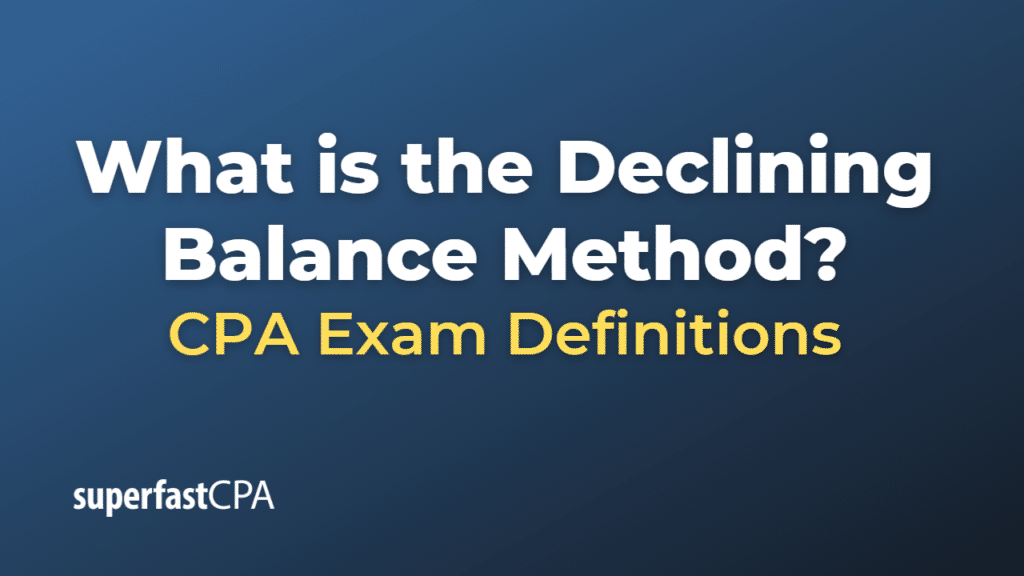Declining Balance Method
The declining balance method is a type of accelerated depreciation method that is used to allocate the cost of a tangible asset over its useful life. This method is called “accelerated” because it records higher depreciation expense in the earlier years of an asset’s life and lower depreciation expense in the later years, as compared to the straight-line depreciation method which spreads the cost evenly over the useful life.
The formula for the declining balance method is:
Depreciation Expense = (Book Value at Beginning of Year) x (Depreciation Rate)
In this formula, the depreciation rate is usually a multiple of the straight-line rate. For example, if the straight-line rate is 20%, the double declining balance method would use a rate of 40%.
Here’s the key thing to note about the declining balance method: it applies the depreciation rate to the asset’s book value at the beginning of each period, rather than to the original cost of the asset. This is why the depreciation expense decreases each year.
The declining balance method is commonly used for assets that lose their value quickly, such as computers and other technology equipment. It’s also used when the benefits provided by the asset are expected to be greater in the earlier years of its life.
Example of the Declining Balance Method
Suppose a company purchases a machine for $10,000. The machine has a useful life of 5 years and a salvage value of $1,000.
First, we need to calculate the straight-line depreciation rate. The straight-line depreciation rate is 1 divided by the useful life, so in this case, it’s 1/5 = 20%.
For the double declining balance method, we double this rate. So, the double declining rate would be 2 * 20% = 40%.
Now, we apply this 40% rate to the book value of the asset at the start of each year to calculate the depreciation expense for that year. Here’s how the calculation would work:
- Year 1: The book value at the start is $10,000. So, the depreciation expense is $10,000 * 40% = $4,000. The book value at the end of the year is $10,000 – $4,000 = $6,000.
- Year 2: The book value at the start is $6,000. So, the depreciation expense is $6,000 * 40% = $2,400. The book value at the end of the year is $6,000 – $2,400 = $3,600.
- Year 3: The book value at the start is $3,600. So, the depreciation expense is $3,600 * 40% = $1,440. The book value at the end of the year is $3,600 – $1,440 = $2,160.
- Year 4: The book value at the start is $2,160. So, the depreciation expense is $2,160 * 40% = $864. The book value at the end of the year is $2,160 – $864 = $1,296.
- Year 5: The book value at the start is $1,296. However, we need to be careful here because we can’t depreciate the asset below its salvage value of $1,000. So, the depreciation expense for Year 5 is just $1,296 – $1,000 = $296. The book value at the end of the year is $1,296 – $296 = $1,000, which is the salvage value.
This example shows how the declining balance method results in higher depreciation in the early years and lower depreciation in the later years.













